Gino is a Dutch geologist, who obtained his PhD from the IPGP, Paris, and is now a postdoc at ISTerre in Grenoble. His current research aims at understanding sea-level history from tectonically uplifting coastlines worldwide. Here he shares his experiences from a recent fieldwork in Cuba.
When I tell people I have to spend a few weeks on some sunny coastlines to do geologic fieldwork, like this time in Cuba, many reactions involve suspicion (“I think you only choose your research topics based on cool fieldwork potential” or “Are you sure it’s actually necessary for you to physically go there?”) and envy (“Why can’t I have your job”, or simply “Shut up, you”). I realise that with this blog post I’m unlikely to take away all of the envy, but at least I hope to make clear that these sort of visits serve purposes that go beyond pretty beaches and nice weather.
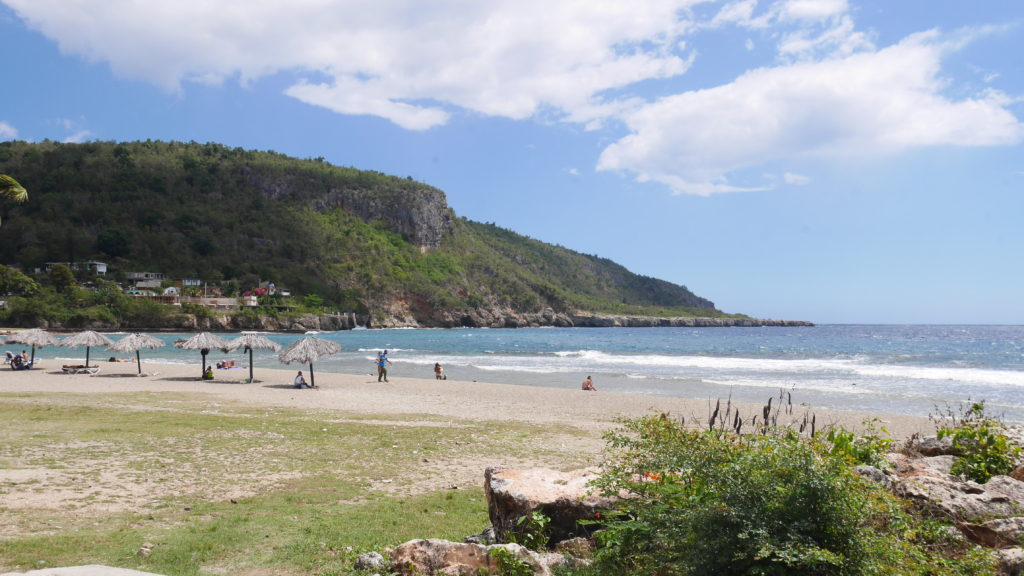
Doing geologic fieldwork on Cuba is a great joy. From my point of view the Cubans have a great intellectual, emotional and musical wealth, and live in a pretty country. From the moment we arrived in Havana airport, until we took off two weeks later, this trip has been full of nice encounters with curious and friendly locals. Our crew consisted of 3 France-based scientists (including me) and 6 Cuban colleagues from the Institituto de Geología y Paleontología. I was the only one not to speak Spanish, and the Cubans spoke little English, but that didn’t keep us from joking around on a regular basis. Our itinerary brought us from Havana, through a 12-hour car-ride, to Santiago de Cuba. Normally I’m not a big fan of long car rides, but on this occasion there were a lot of new impressions and a jetlag to process, so I didn’t mind. The roads were in good condition, but surprisingly empty: cars tend to be a luxury item that many cannot afford. The cars that were there though, were generally looking vintage cool and classy. Within the towns, bicycles and horse-carriages were surprisingly common as way of transportation. The roads, land- and cityscapes are devoid of big advertisements and billboards, which made everything surprisingly gentle on the eye. Occasional murals and artworks depicting Fidel Castro, Che Guevara and other revolutionaries seemed to blend it better with the landscapes than any advertisement would have.
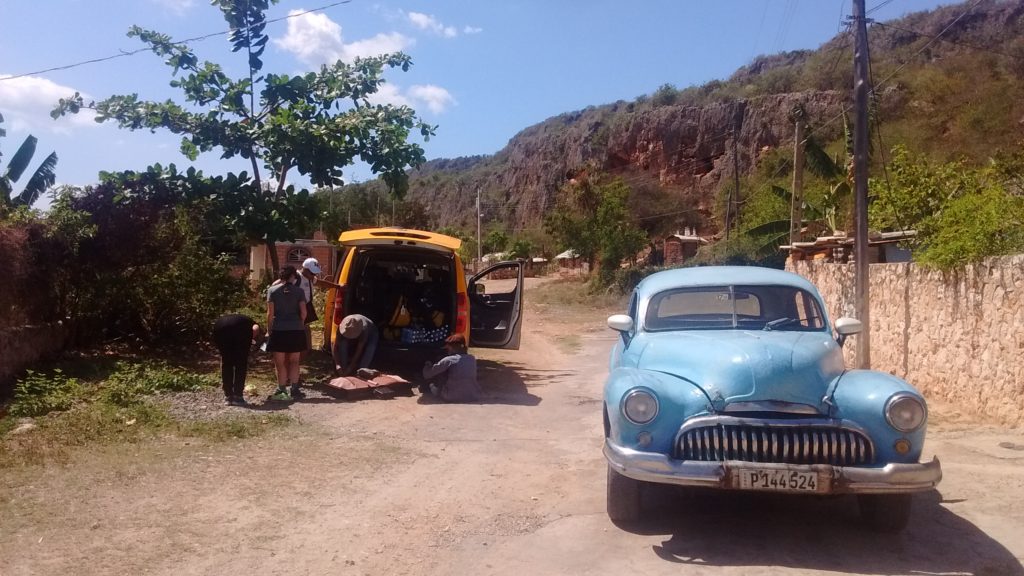
Santiago de Cuba is the main city along the southeast coastline of Cuba. The main reason for us to go there was the easy access to nearby coral reef terraces. Those are basically the fossilised version of coral reefs, and in the case of Cuba they can be found on land. They have been brought up from the shallow seawaters by tectonic activity: with every earthquake along the big faults to the south, the land moves up a bit (centimeters to meters). Because such earthquakes have been taking place there since several hundred thousands of years, they have brought these terraces up to elevations of a few hundred meters. Understanding how old the terraces are, and by how much they have been elevated from their original position in shallow waters, can tell us both about the tectonic activity of major faults, and how high/low the past sea level has been. In order to figure out the ages of the terraces, we drill into big and well-preserved fossil corals that we find within the terraces: we take the drilled cylinders back to France for radiometric dating. To obtain accurate elevations of the terraces, we use a differential GPS.
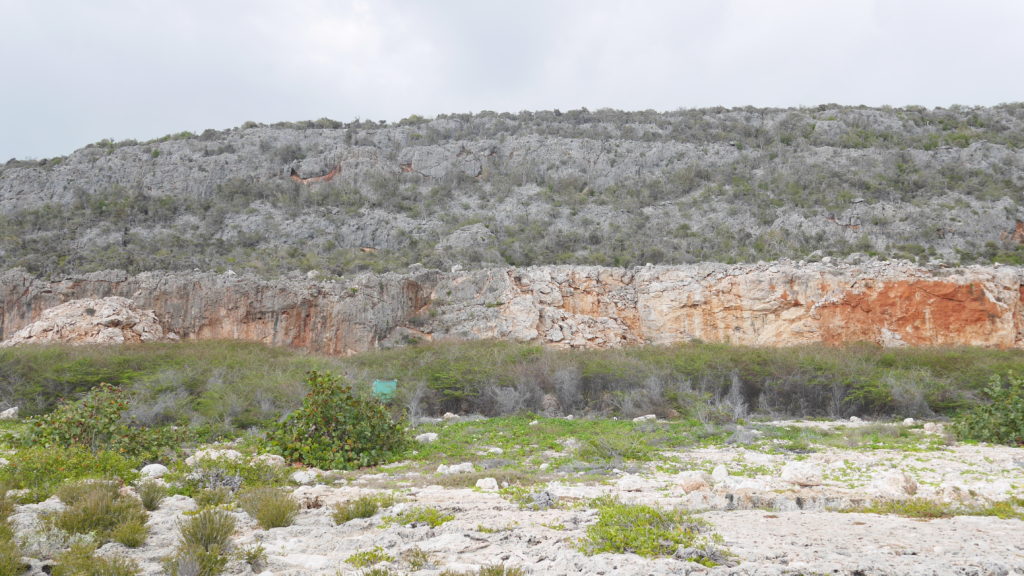
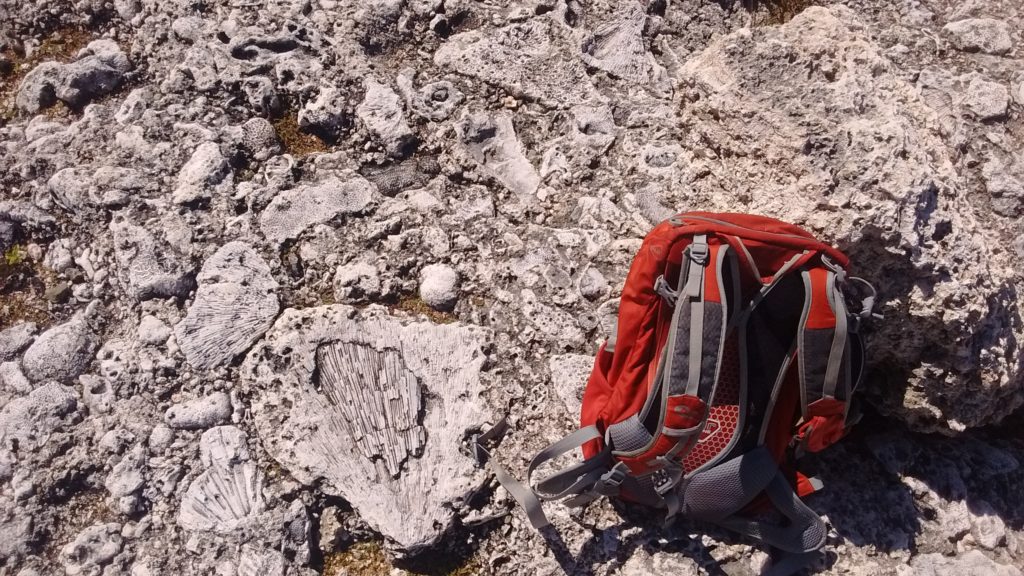
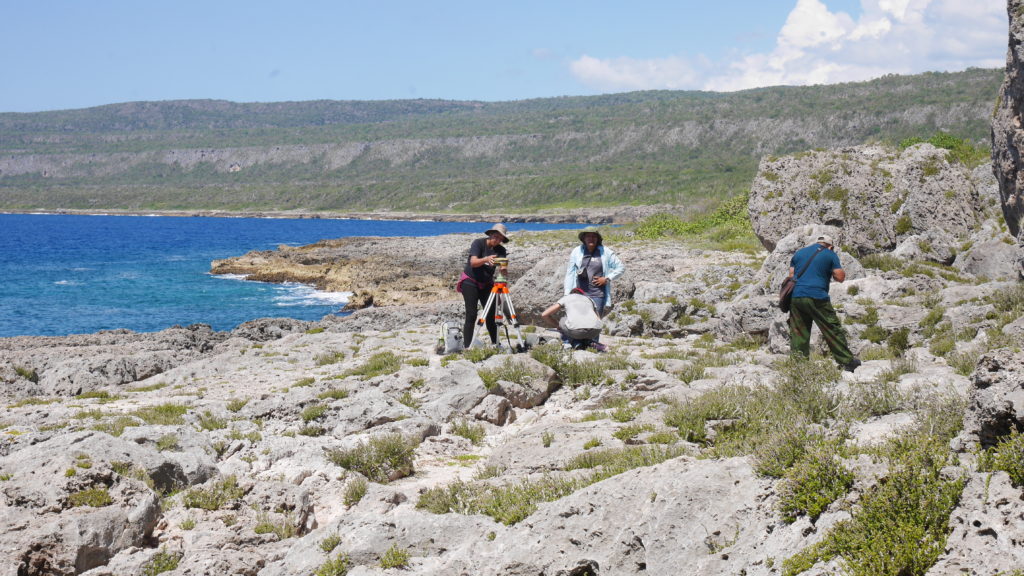
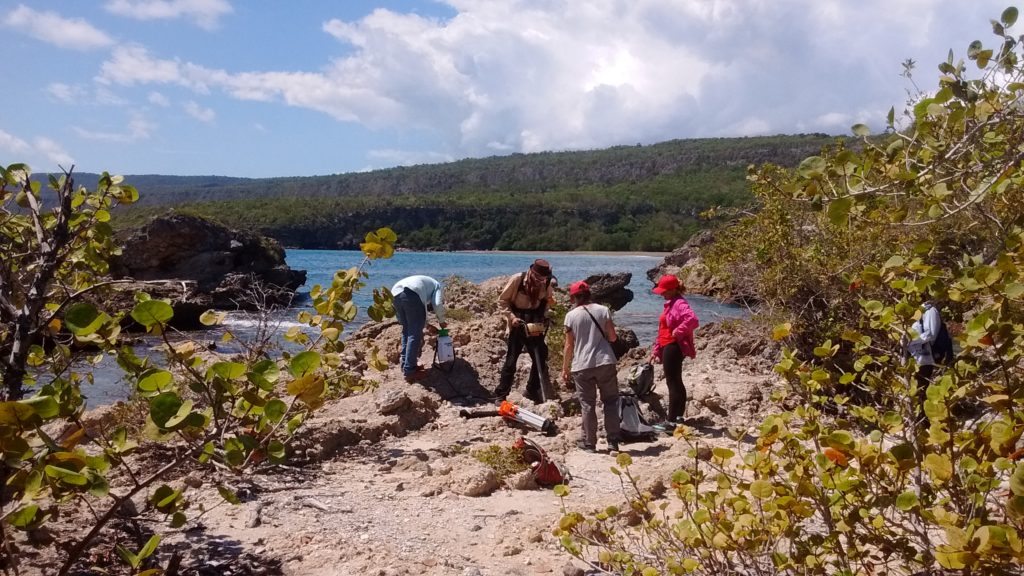
The days on the terraces around Santiago are long and sunny, and as a consequence my neck resembles the Polish flag. Nonetheless, it’s during days like these that I think I have the best possible job in the world. As a team we work well together, and collect a lot of samples and measurements. The continuous salsa/cumbia/reggaeton rhythms blasting through our field-speakers definitely help for the good atmosphere. We also go for occasional snorkelling sessions, to observe how the present-day coastline and its shallow water bathymetry are formed. As expected, the fossil coral species on the terraces resemble the coral species we see living below the water surface. Another interesting element of the terraces is the occurrence of massive rock boulders, which have been thrown on there during major hurricanes. From discussion with locals we learn that hurricane Sandy (2012) was responsible for a lot of those. Especially at the spot where there used to be a massive and luxurious resort – Club Bucanero – it shocked us to see the ruins that were caused. Interestingly the Club was partly constructed using hurricane boulders, implying that they could have known Sandy has had destructive predecessors. We take a lot of photographs from different angles of those boulders, and through photogrammetry we should eventually be able to calculate the exact size and weight of the boulders.

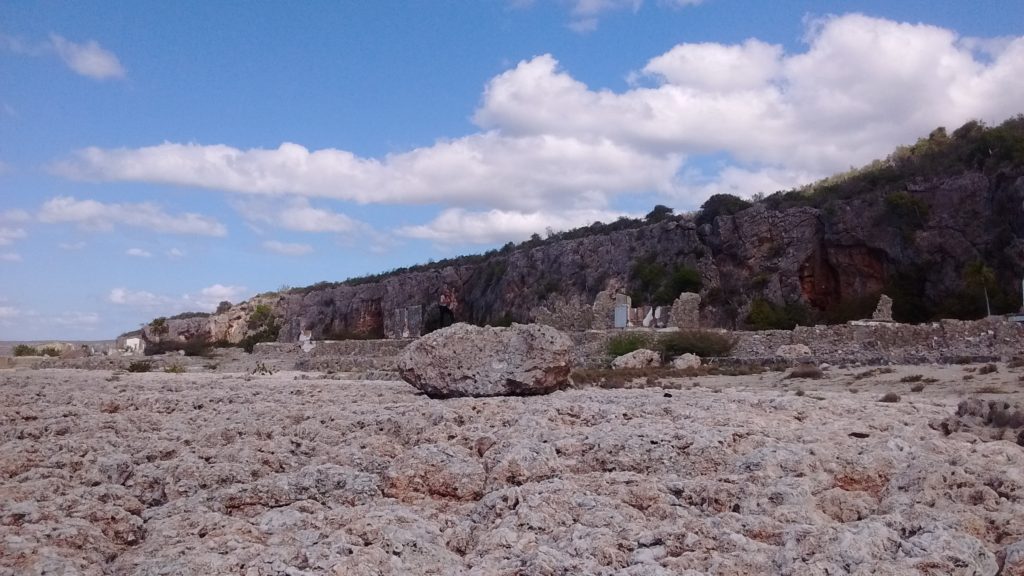
During the evenings we feast on nice fish, shrimps or meat accompanied by rice with red beans, and because I’m the youngest (still supposed to grow?), somehow all the food leftovers keep coming my way. We profit from the cultural life that Santiago has to offer, in particular the great music scene. I understood from my colleagues that Cuba has the highest percentage of professional musicians in the world – many state-sponsored – and it shows. The salsa night on the town square is a highlight, although I hope the videos my colleagues took of my Dutch salsa-skills won’t be used against me. Another highlight was the 66th birthday of Peña, who was the oldest of our team, and has been working on the Cuban terraces for over 30 years. He was surprised with a bottle of wine and a birthday pie, and explained us that for his generation celebrating a birthday is oddly individualistic: he was more used to community celebrations in relation to revolutionary and republican anniversaries. He seemed genuinely happy though, and recited us some poetry: I couldn’t understand much, but the emotion was clear, as I could feel through the silence and respect from the others in our team.
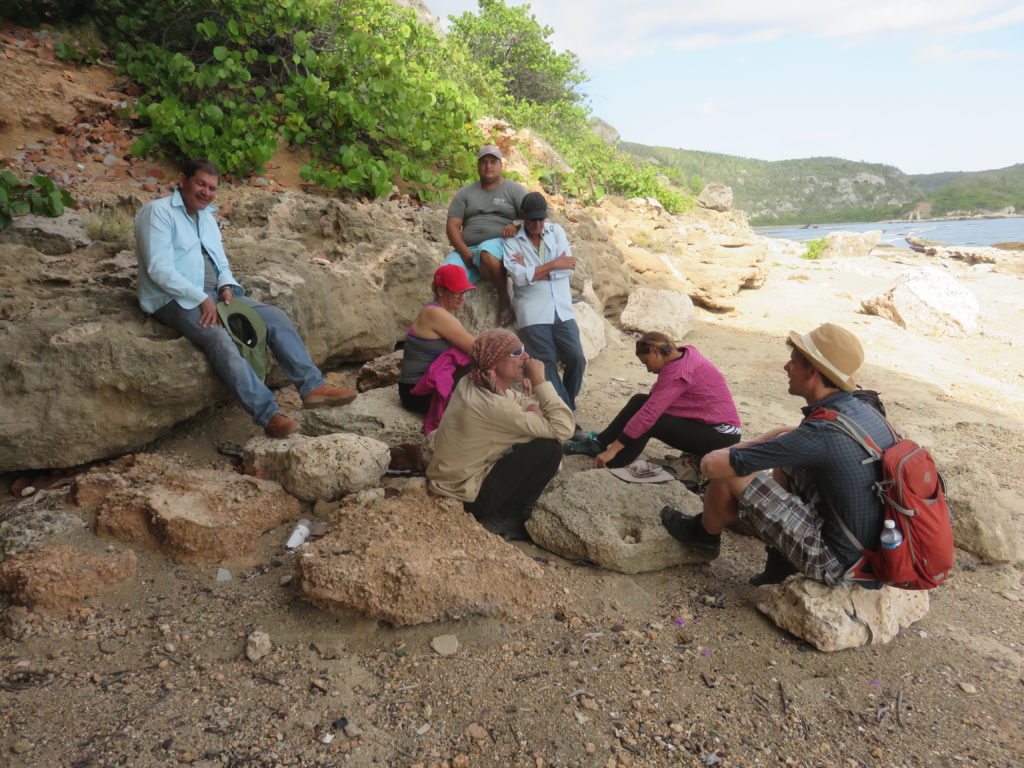
The second week we moved to Niquero, on the western tip of the same coastline. It is a smaller town, with a massive sugarcane factory, and the area felt more tropical. It has more mosquitoes, mangroves with crocodiles, and a terrace-jungle that has even made it as a Unesco World Heritage site. It is a sign that the Cubans value and respect their geology and ecology, with the species of this national park remaining 43% (flora) and 25% (fauna) endemic. It takes us two days to get started on the fieldwork in this area, as both the natural importance of the area, as well as the drug trafficking importance, require us to drive around for a bunch of permits.
In the field we are accompanied by a local ecologist, who was involved in turning our field area into a Unesco world-heritage site, and who gives us plenty of interesting information about the area. Apparently Cape Cruz was one of the first Caribbean landing-sites of Columbus in the late 15th century, and in the centuries after that became a popular hide-out with English, French and Dutch buccaneers. I hope my impact on the country will be more positive than that of my European predecessors. Well-guided through the jungle trails, we continue in the same way we had been working before, collecting samples and taking measurements. We experience some logistical challenges these days: the van gets stuck in the sand, but with some help from the locals and some horsepower we manage to overcome this. At some point our van runs out of oil, but we similarly overcome this issue with local support. The last couple of field days we lack water, and have to suffer the heat with one lukewarm can of coke per person for the entire day, but we manage.
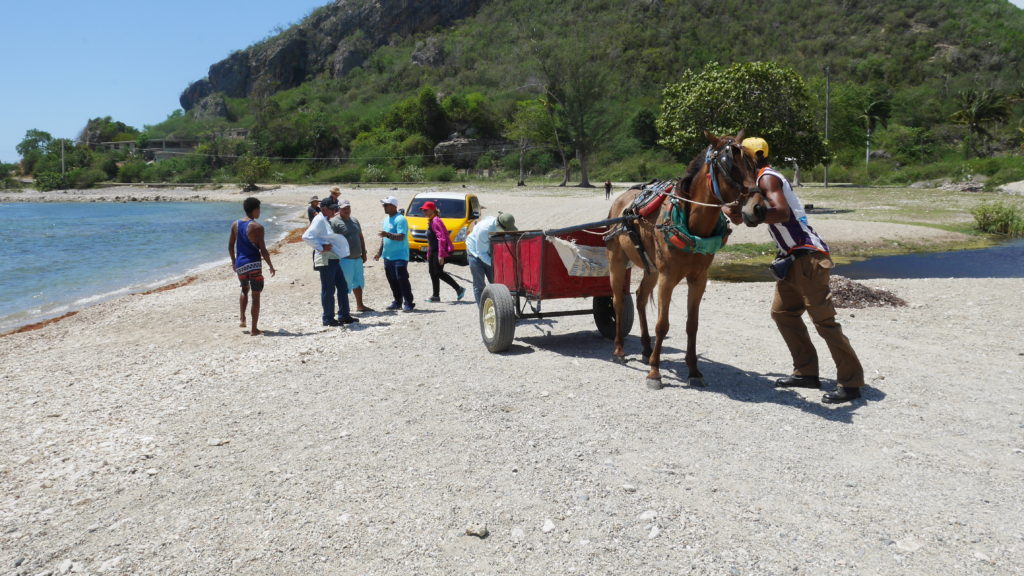
The evenings in Niquero are again filled with good amounts of food and music. This area is known for its street music with barrel organs, an instrument which has a rather dull and old-fashioned reputation in the Netherlands. Here I learn though that they can also be used for funky salsa tunes, to which some of the locals demonstrate their rather intimate dancing techniques. The younger local residents (age 15-25) prefer the reggaeton fiesta’s on the big town square, where salsa dancing is replaced with elaborate twerking techniques. Their overlooking parents (age 40-50) provide the social control. In Niquero I figure out two ways to make new friends with little language skills: my popular impersonation of a duck (“no soy un hombre, soy un pato!”) works especially well with curious kids, and my Cuban colleagues cannot get enough of it either. By joining in on a little football tournament I also earn some respect from the sporty teenage boys.
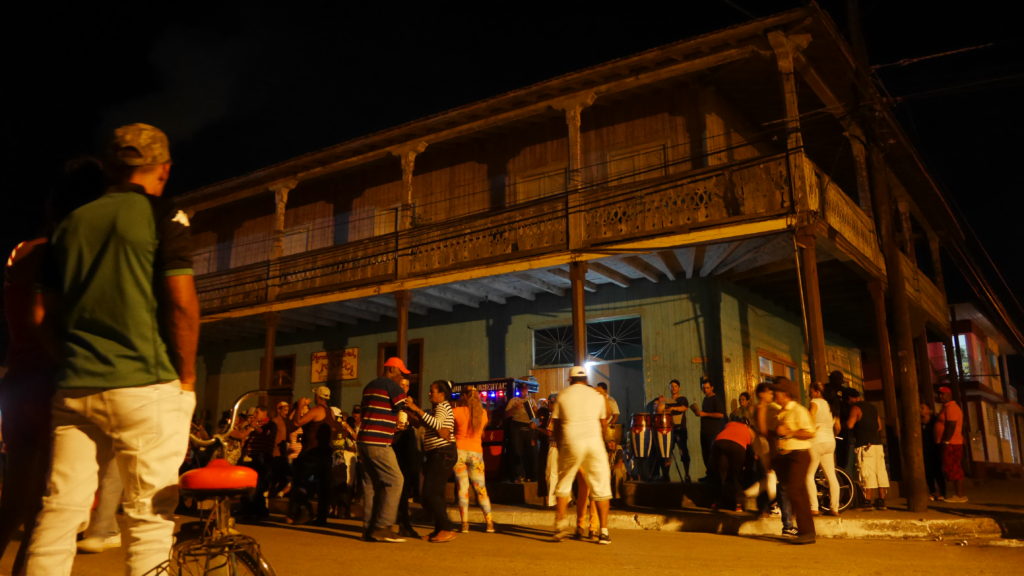
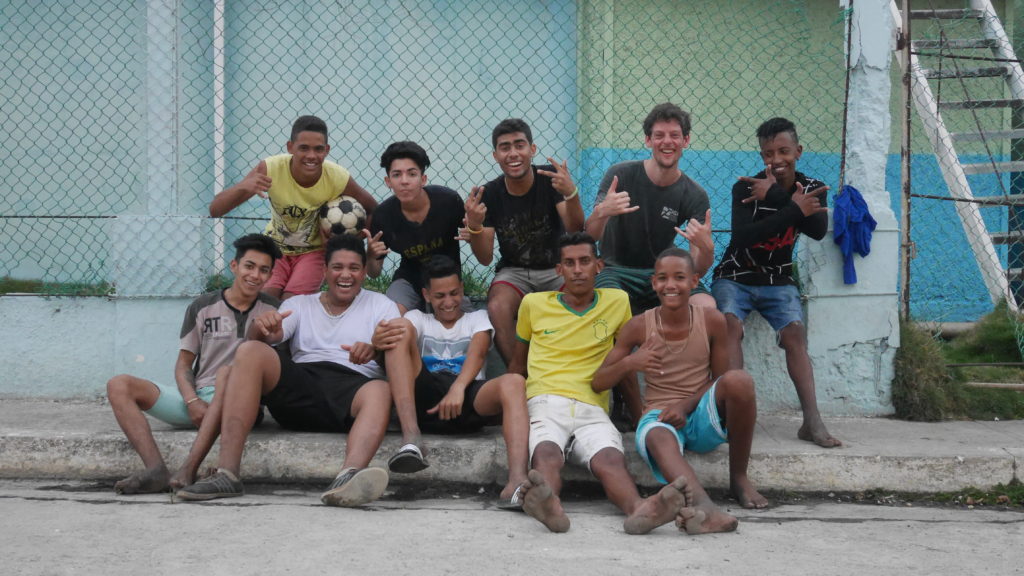
The long drive back to Havana is filled with Backstreet Boys music, which are still (again?) surprisingly popular amongst our Cuban colleagues. Given that in the evenings I’ve seen Spanish-dubbed versions of Back-to-the-Future and Home Alone on the television, I conclude that American 90s culture is still well appreciated here. Back in Havana we get to spend a full day of meeting with the Director of Geology (from the Ministry of Energy) and a delegation from our Cuban colleague’s institute. If I would have realised this beforehand I would have worn something different then my jogging pants and fieldwork-stained shirt, but given my Spanish level I was a silent background element of the meeting anyway. We are left with half an hour to see something of the city, so with one of my French colleagues we make a short, high-speed tourist tour to the pretty city centre. The waiting time before our flight back to Paris is a good moment to spend our last Cuban pesos on some rum, and reflect on the field trip.
Although we might have wished a little more field days at the expense of bureaucracy and transport days, we think we got a lot out of this trip. Our collaboration with the Cubans is successful and joyful, we collected all the samples and measurements we aimed for, and the huge potential for future research on the Cuban terraces is apparent. We are excited to see what our samples will bring during our analyses over the next months, and cannot wait to head back for further investigations!
Gino de Gelder is funded by a postdoctoral grant from the Centre National d’Etudes Spatiales (CNES) and this fieldwork benefited from a French national Grant “Agence Nationale de la Recherche (ANR)” in the Program “Investissements d’avenir” (ANR-10-LABX-19-01, Labex Mer) (CLIMORESO project) and the French CNES-TOSCA project (CETTROPICO) driven both by Christine Authemayou
![]() This work is licensed under a Creative Commons Attribution-NonCommercial-ShareAlike 4.0 International License.
This work is licensed under a Creative Commons Attribution-NonCommercial-ShareAlike 4.0 International License.
